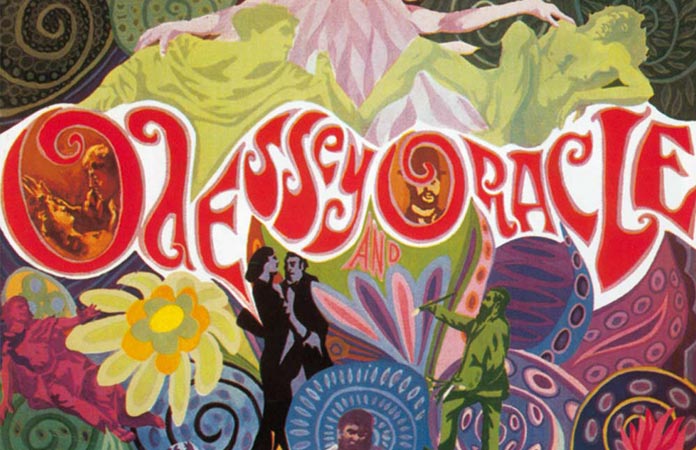Retro Review: The Zombies, Odessey and Oracle
Published on February 17th, 2016 in: Music, Music Reviews, Retrovirus, Reviews |By Lenny Kaye
An Odessey in more ways than one, beyond the Y. These days the answer to that questioning why? is apparent, the oracular pronouncement of a classic album regarded as a touchstone for thoughtful, intelligent pop, as much a part of the last century’s sixties’ meritocracy as anything by their more famous peers. The irony is that by the time the Zombies made the album that is their crowning achievement, working in an Abbey Road Studio just recently vacated by the Beatles’ Sgt. Pepper’s Lonely Hearts Club Band and the Pink Floyd’s mercurial Piper, and saw its last-gasp single suddenly break worldwide, the group had already begun to part ways, moving into the seventies on their own solo missions without the refraction of each other.
It was a hard coming-of-age for the survivors of the Brit Invasion as the sixties spiraled toward Woodstock and Altamont. There were many–the Dave Clark Five, the Searchers, Gerry and the Pacemakers, Freddie and the Dreamers–who couldn’t make the leap to faith that the expansive possibilities of the decade offered. Even the vaunted Yardbirds came up short against the demands of the pop marketplace. Those that succeeded in bridging the gap were able to handle the demands of the album-length concept: the Who with Tommy, the Small Faces’ Ogden’s Nut Gone Flake, the Pretty Things’ S.F. Sorrow, and ever always the Kinks. Not to mention your Beatles and Stones; but at the end of the sixties, they were of a different stratosphere.
The Zombies were counted among the least likely to transcend their moment, even though their musicianship and innovative arrangements made them a long-shot worth noting. Their first two hits, 1964’s “Tell Him No,” and “She’s Not There” (with the same stop-and-start rhythm as would underpin their surprise 1969 hit “Time of the Season”), were mostly driven by electric piano, and the group’s studious image surely toned down the adolescent frenzy. Their keyboard soloist, Rod Argent, took an extraordinary instrumental ride on “She’s Not There.” This prowess probably caused Al Kooper, then a staff producer for Columbia in America and scouting in their A&R department, to pay more attention to the album that he brought home from England in 1968, one that had already racked up its minimal sales. More than a group’s dying gasp, he listened and found a wellspring of creativity, social insight, songcraft at its highest, and a beating heart worn on its sleeve.
In April of 1969, reviewing the album for Jazz and Pop in the wake of Kooper’s own boosterism of the album in Rolling Stone, I too was taken by “an album whose prettiness is never trite, and whose beauty is crystal-clear and liquid.” What I didn’t hear, or at least acknowledge, was the debt the Zombies owed to the Beach Boys in their most fecund period, how the instruments within Abbey Road–the harpsichord and mellotron especially–lent themselves to the ambitious reach of an album that caught Britain not in the then-present moment, but it’s whole folkloric history.
There is within O & O the feel of the English garden, its blooms and Victorian primness and tea in the afternoon, its reserve of harmonies that break free from melodies and swirl about in flourishes that are floral (couldn’t resist). Guided by Colin Blunstone’s pitch-perfect voice, arrangements dart and dance amidst pop prettiness, sing-a-longs in spite of their intricacies: the arabesque of the Maypole in “Changes,” the plainsong of “I Want Her She Wants Me.” There are lyrical twists: “Care of Cell 44,” is a love letter to an incarcerated prisoner, with a buoyancy of imminent release; or the Victorian tragedy that is “A Rose For Emily.” There is often a dark spirit lurking beneath the lilting harmonies. “The day grows dark” in “Beachwood Park.” A horror pervades “Butcher’s Tale (Western Front 1914),” especially on this century’s anniversary of the Great War, and its attendant trials of the human spirit (for a literary insight, please read Sebastian Foulks’ Birdsong).
One for the ages. Timeless of the seasons.
Lenny Kaye is an American guitarist, composer, and writer who is best known as a member of the Patti Smith Group.

Time limit is exhausted. Please reload the CAPTCHA.